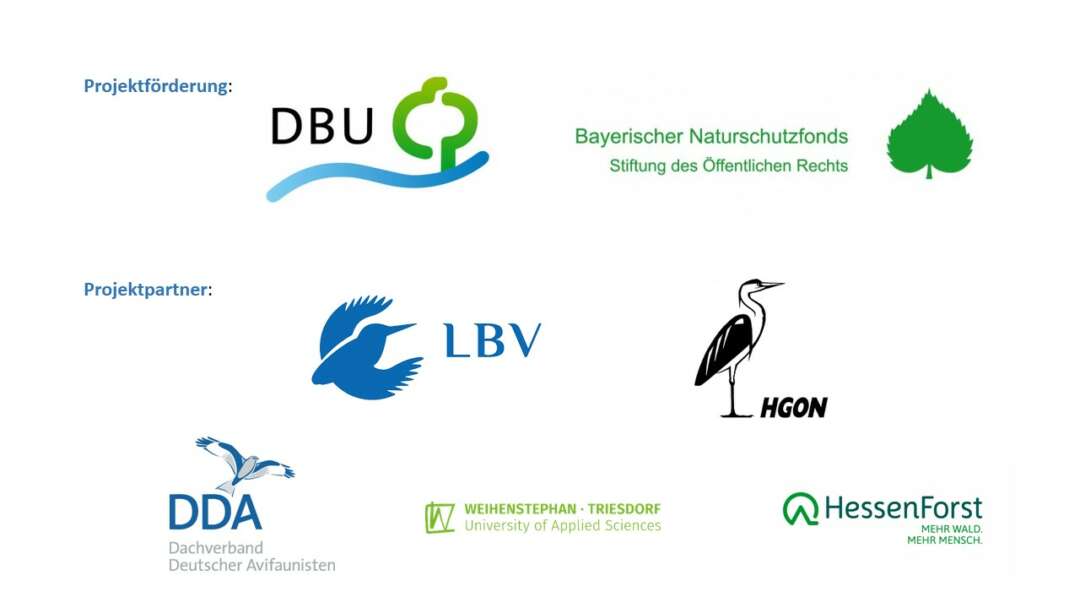How can you participate?
1. Fill in the registration form
Here you will find the registration form, which you can use to register as a Citizen Scientist in the Lesser Spotted Woodpecker project. In the following days you will receive further information by e-mail.
2. Participate in trainings
During March we will offer trainings (about 2-3 h) where you will get all important information about the Lesser Spotted Woodpecker, the project and the scientific methods to be used. In 2021 these trainings will unfortunately only take place virtually in the form of a video conference – in 2022 and 2023 hopefully again as a face-to-face event followed by a field trip.
3. Determine counting route
Following the completed training, each participant can define a counting route for themselves near their home, which should be maintained over the three-year project duration.
If possible, the route should be chosen in an area/habitat where Lesser Spotted Woodpeckers have been detected or at least have the potential to occur. To do this, you can look at known Lesser Spotted Woodpecker occurrences in your area in the Regioportal recently published by the Dachverband Deutscher Avifaunisten (DDA) (help for the portal can be found here). Detailed information on this and on the typical habitat of the Lesser Spotted Woodpecker will be provided in the training.
4. The start: you will receive speakers
To start the mapping, you will receive a small portable loudspeaker from us, which you can connect to your smartphone and by means of which sound dummies will be played in the field along the counting route at previously determined counting points (stops). Dummy sounds are acoustic calls used in science to survey difficult-to-record species.
5. Walking routes and writing down observations
Mapping officially starts at the end of February (2021 slightly later due to organization). Until the beginning of May, the route you have chosen (of at least 1.2 km in length or 5 stops) should be walked on three dates in the morning hours.
For the mapping you need a smartphone or tablet (Bluetooth- and GPS-enabled), the app NaturaList installed on it and a personal user account on ornitho.de. The woodpecker observations you make are noted by you in the app, collected centrally and evaluated by us.
Unfortunately, the app is not available for users of Apple devices, it only works with Android. In such cases, there is the possibility to first record the observation data on a paper sheet. Having binoculars with you in the field is of course always useful.
In 2020, the so-called “woodpecker module” was launched on ornitho.de together with the DDA in Hesse, on the basis of which a state-wide woodpecker monitoring of all species will be possible in the future. Since we are using this tool for the Lesser Spotted Woodpecker mapping, it would be desirable if you also record other woodpecker species on the first two mapping dates.
6. Describe search for breeding cavities and habitat.
In addition to woodpecker counts, we would like to study the breeding biology of the Lesser Spotted Woodpecker in more detail. Presumably, this is a critical period in the life of the Lesser Spotted Woodpecker and is therefore crucial for the conservation status of the species.
The third mapping date will be used primarily to search for breeding cavities of the Lesser Spotted Woodpecker. In addition, a brief characterization of the habitat will be conducted at each count stop. If occupied breeding cavities are found, the following on-site breeding biology surveys will be guided and supervised by both experts from the project management and students from the Weihenstephan Triesdorf University of Applied Sciences.
After each season and finally at the end of the three-year field work, the data obtained will be comprehensively evaluated. The findings will then be incorporated into a catalog of measures dedicated to the protection of the Lesser Spotted Woodpecker. For the implementation of these conservation measures, Senckenberg will work closely with stakeholders from the forestry sector, first and foremost HessenForst.
Registration and contact:
Click here to register for participation in the project.
If you have any questions about the project, please send us an email to
kerstin.hoentsch@senckenberg.de.


